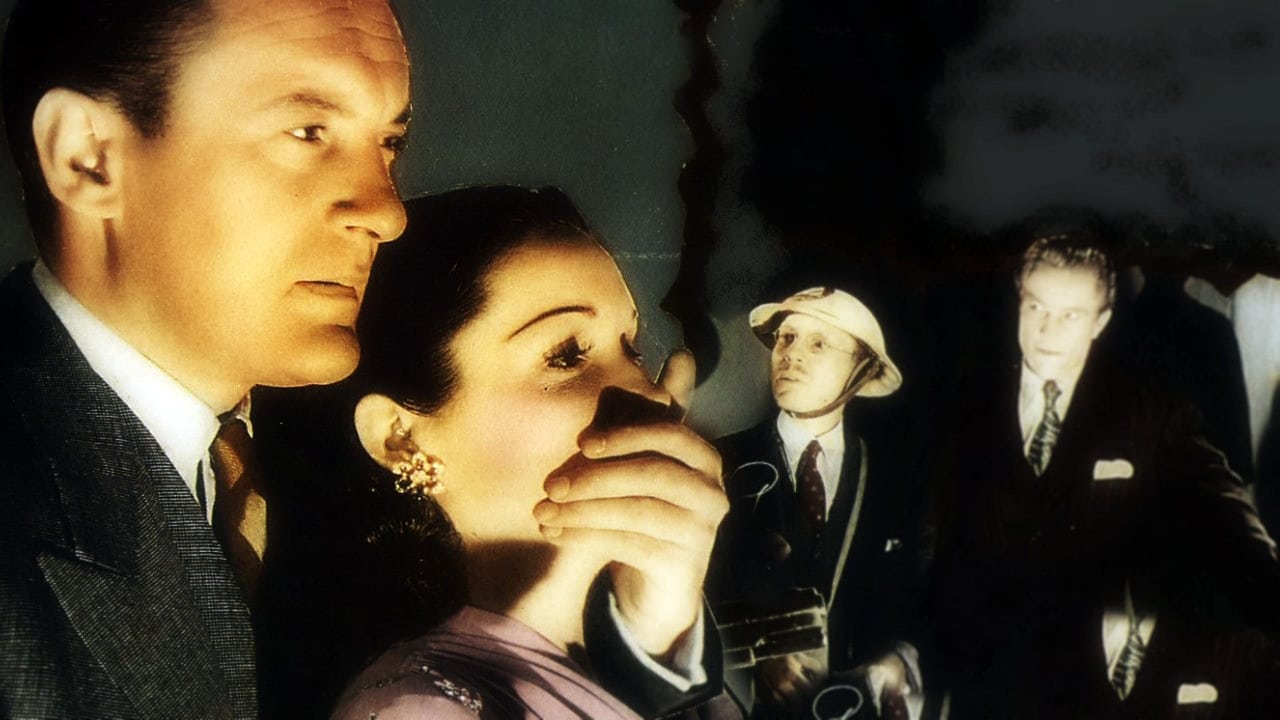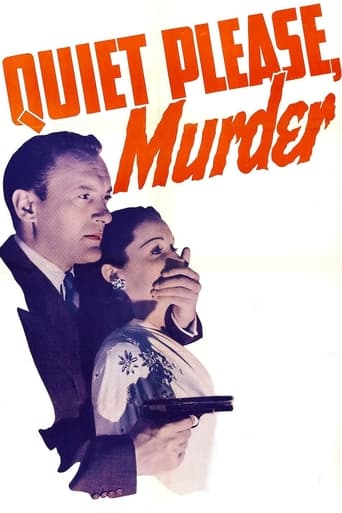

With my dad being a fan of George Sanders The Saint/Falcon movies,I decided to search round for a Sanders movie that he could enjoy over the Easter holiday.Taking a look at a DVD sellers page,I spotted a fun-sounding Film Noir starring Sanders,which led to me staying quiet.The plot:Desperate to get as close to one of the few manuscripts of Hamlet in existence,book forger Jim Fleg kills the security guard and steals the manuscript.Being an expert on the black market,Fleg arranges for Myra Blandy to sell fakes of the manuscript for him.Ignoring Fleg's demands,Blandy sells a manuscript to a high-roller called Hal McByrne.Unknown to Blandy,McByrne is a tough cop,who has been following their trail.Fearing that McByrne is closing in,Fleg decides that Mcbyrne's chapter needs closing.View on the film:Opening with a startling robbery sequence.co-writer/(along with Lawrence G. Blochman) director John Larkin brews a frosty Film Noir atmosphere,with Larkin & cinematographer Joseph MacDonald dimming the lights,as Fleg and Blandy find themselves stuck in a tough corner.Taking place largely in a library,Larkin smartly uses war time blackouts to cover the location in merciless shadows,which McByrne discovers contains people who want to give him his final blackout.After kicking things off with a thrilling intro,the screenplay by Larkin & Blochman sadly jumbles things up,with the writers keeping the movie largely locked down in the blacked-out library,which leads to the film being unable to build a real sense of tension.Along with the closed-in location,the writers also blow away the excitement created in the opening,by pushing Fleg to the sidelines,and instead focus on the growing romance between McByrne & Blandy,which despite giving Blandy a good Femme Fatale shade,is never set alight.Despite being pushed to the narrow margins, George Sanders is still able to give a wonderful performance as Jim Fleg,thanks to Sanders showing Fleg's silky smooth charm to hide a ruthless desire to keeps his crimes unpublished.Chasing after Fleg, Richard Denning gives a good,stern performance as Hal McByrne,whilst the pretty Gail Patrick gives an icy Femme Fatale performance as Myra Blandy,in a Film Noir which offers a speedy read.
... View More"Quiet Please, Murder" is an odd movie that grows on you. Notice I didn't say Noir, or even Mystery - it's more of a drama/ romance in the 'B' mold. There must have been a headline movie billed over it because it couldn't stand on its own.Having said that, it's a fast-paced, compelling picture with an interesting cast that takes place mainly a city library. George Sanders, Hollywood's most polished bad guy, is a forger of priceless manuscripts and Gail Patrick is his legman (woman). They make the mistake of selling one to Sidney Blackmer, a frontman for the Nazis, who were trying to corner the market on rare art and literature. Richard Denning is a private eye who is hot on Sanders' trail.There is an undercurrent between Sanders and Patrick of some Freudian psychological aberration regarding sado-masochism which may or may not be an interesting plot twist. I thought Denning lacked gravitas and the part needed someone else. Byron Foulger, who must have made a thousand movies, is on hand as a librarian - you would recognize him immediately.And just when you think the picture is becoming a little far-fetched, it is over, as it is only 70 minutes long. All it would have needed was one more plot contrivance or loose end and I would have lowered my rating. This film played on TCM the other morning.
... View MoreToward the end of the great period of experimentation, we have some experiments in excess.The story here is about four great minds colliding, each intending to outsmart and probably kill the others.One is a master forger who steals great books in order to sell copies. At the opening of the film, he steals a unique "Hamlet."A second is a master detective, whose mere name throws everyone into a guarded position and further intrigue.Then you have a (presumably) beautiful and intelligent woman, initially the forger's mistress and assistant. She plays all sides against the others for her benefit.And because the US was at war with evil Germany, we have an evil German and his German henchmen. He was an unhappy customer of a fraudulent copy of the purloined Hamlet. (Interestingly, the so called Burbage Hamlet was itself stolen.) His purchase was with Nazi money that itself was stolen.Witnessing the whole thing is the sweet, sweet fiancé of a GI.These four arrange to be in a grand public library (London?) just at closing time. What we see is a game of wits. People die. Books are stolen and restolen. Its a great idea, and perhaps in better hands it would have worked. But this is bizarrely confusing and uncinematic. Its interesting only in its ambitions, which as high as the best con movie.Ted's Evaluation -- 1 of 3: You can find something better to do with this part of your life.
... View MoreA competent B-noir, with the interesting twist of being set in a library. George Sanders' erudite villain is an oily delight; otherwise it's a somewhat overwrought collection of hard-boiled detective film cliches.
... View More